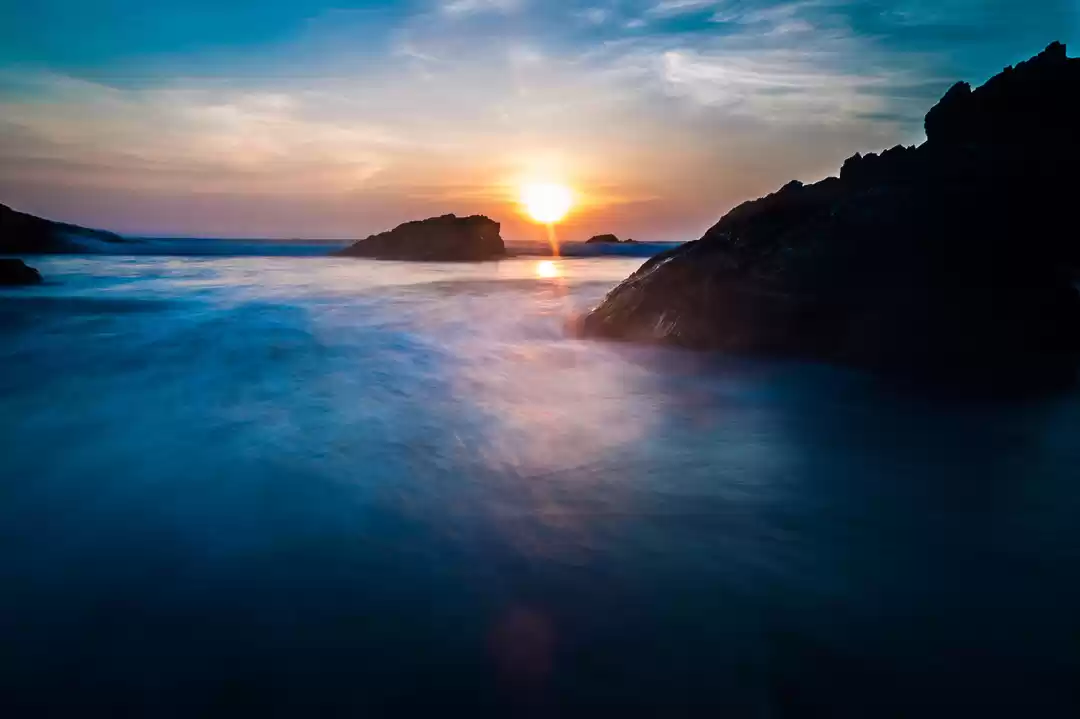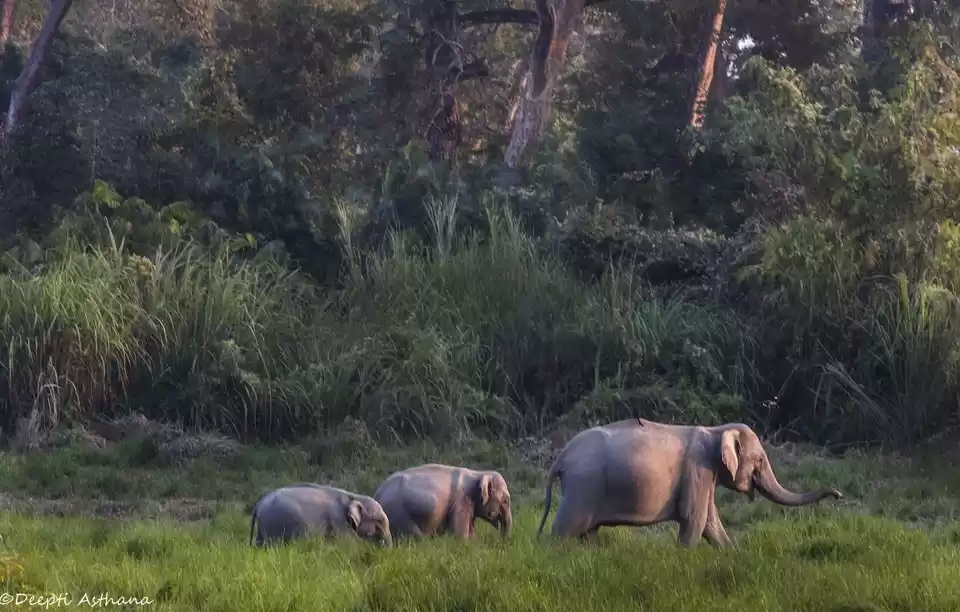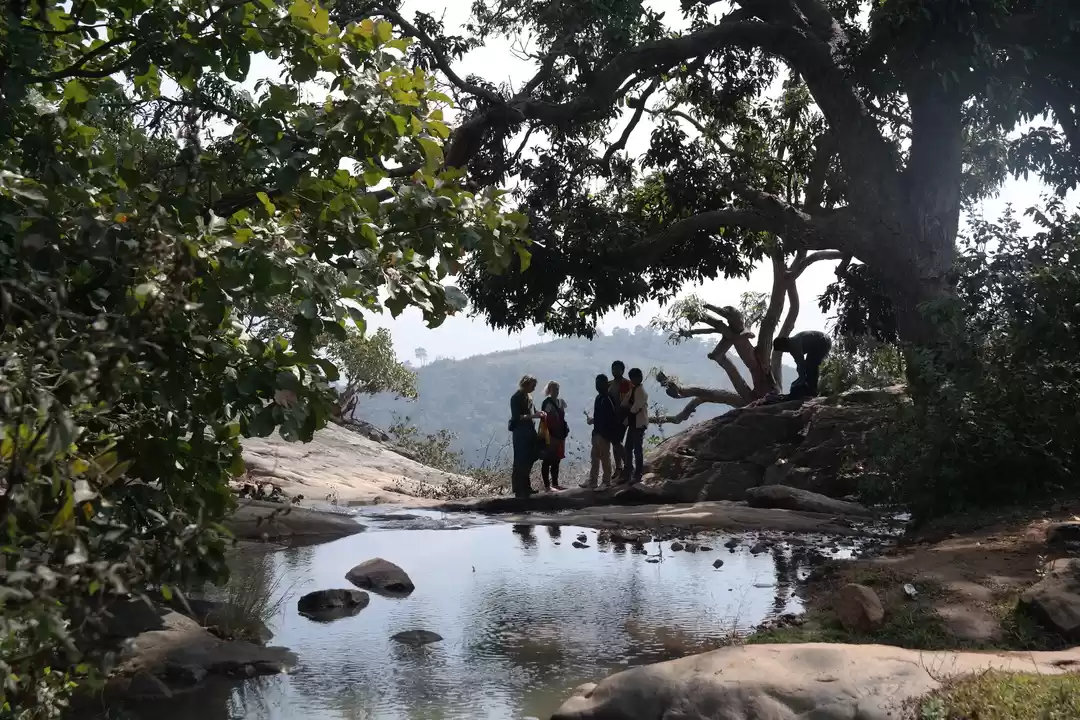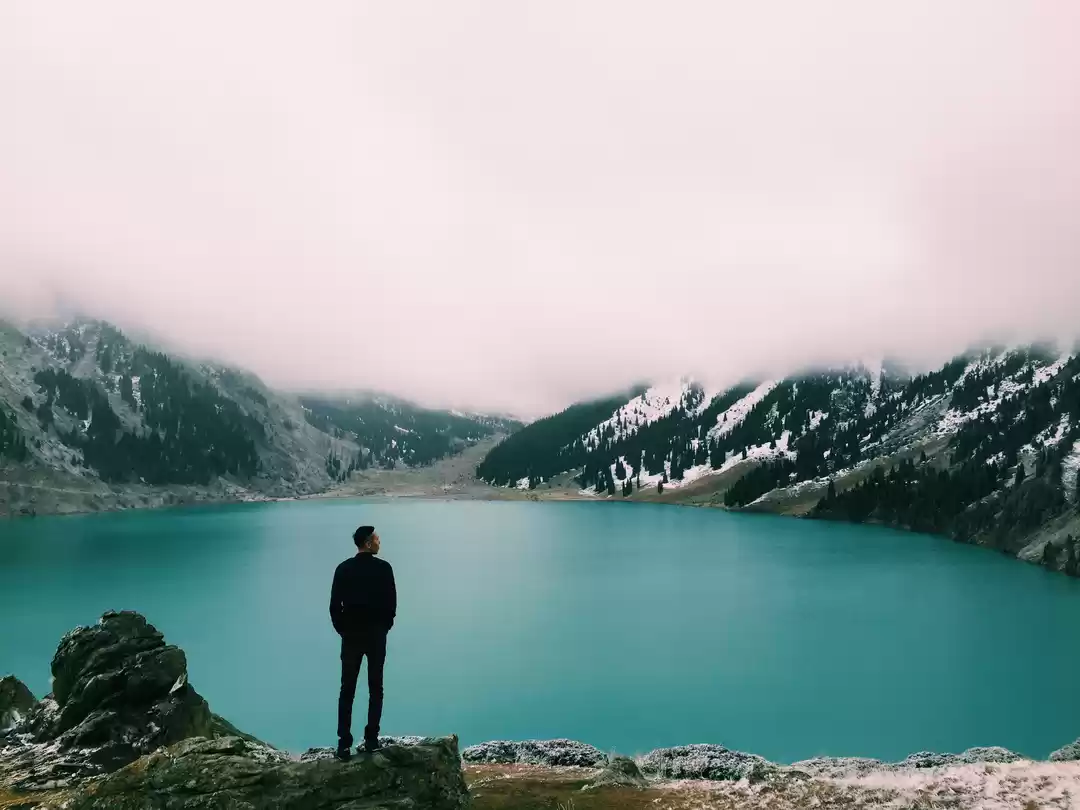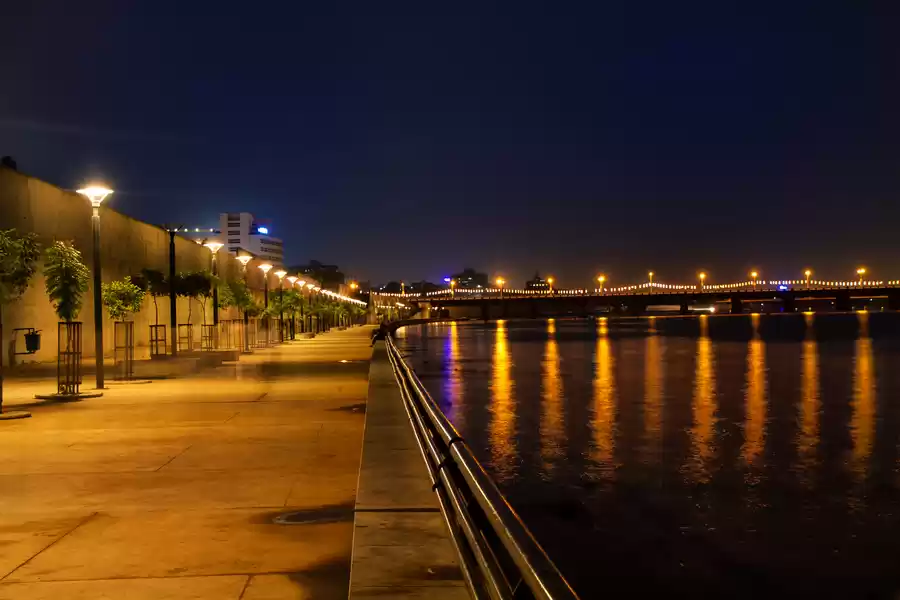India as a travel destination suffers a strange paradox. Of all the cliches that advertisers use to attract tourists, diversity is the most popular adjective, painting this picture of India as a one-stop-shop for every kind of travel experience. However, if you talk to even the most offbeat of travelers, or stalk the most alternative travel blogs, you will be hard-pressed to find a list of 'places to visit in India' that differs from another. For whatever reason, traveler after traveler in this country seem to go around in the same circles. India, at this first glance, feels like that grand uncle with only one stock of stories in his arsenal. And however fascinating the stories may be, however riveting his rendition of them, you've heard them all before.
Having traveled India greatly, however, I couldn't disagree more. As part of Mission Bust-India's-Grand-Uncle-Image, therefore, let me present to you an alternative each to ten of the top 'places to visit in India'. While they are not necessarily substitutes, they offer an experience that feels similar to the original. And all of it without the maddening crowd, pollution and accompanying touts. Some may call it offbeat. I call it having your cake and eating it too. (wink)
1. Searching for some high-altitude serenity?
Gurudongmar Lake in Sikkim
Instead of Pangong Tso in Ladakh
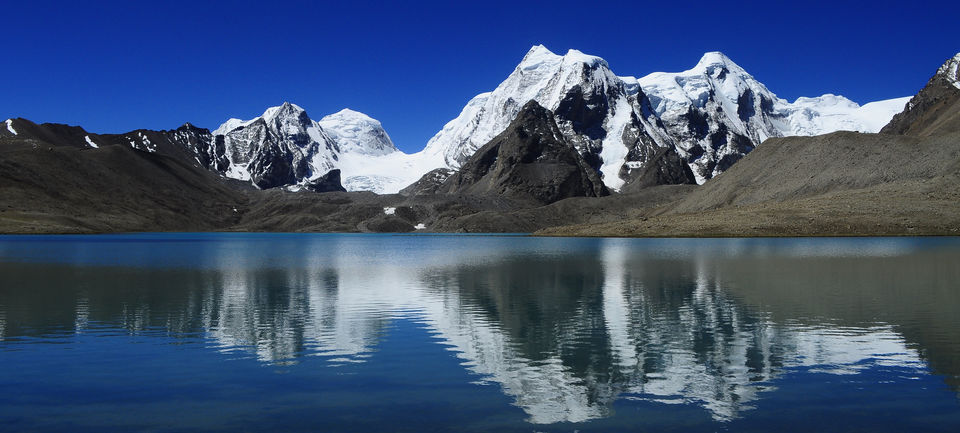
Image Credits: Wikimedia
If this article were written five years ago, Pangong Tso could well have been an alternative to some place, situated as it is in a difficult-to-access part of the barren cold desert of Ladakh. However, the multi-crore blockbuster movie 3 Idiots shot this placid, inaccessible lake to tourist stardom, and the serenity that it so beautifully courted gave way to loud, insensitive crowds. Most unusual travel destinations in north east India.
While the Pangong lake itself remains one of the most breathtaking sights of its kind, in the Eastern Himalayas lies an even better preserved secret. In northern Sikkim, at the end of a two-day trek from Gangtok, lies the Gurudongmar Lake, its emerald waters situated at an impossible height of 17,100 feet. Set in the stunning backdrop of majestic snow-clad peaks and at the end of an arduous trek through a barren, cold landscape, this is a sight you will have earned. And how.

Image Credits: Soumyajit Pramanick
2. Seeking a dash of color in the midst of a vast desert?
The Little Rann of Kutch in Gujarat

Image Credits: Alok Kumar
Jaisalmer makes it all too easily to any list of places to visit in India: unabashedly colorful, gorgeously earthy, and abundantly historic. It has the bustling flea markets, the sandstone architecture, the royal heritage, the vibrantly-clad women – all the makings of the exotic orient that many a travelers seek. Situated in the heart of the Rajasthan desert, it is the land of destination weddings and camel safaris. But it suffers a certain caricaturing: almost every aspect of life here seems to pander to these glossy catalog ideas of India, lending it an air of artifice.
The Little Rann of Kutch, in central Gujarat, suffers fewer pretenses. Situated in a state that has until recently not been seen as a tourism hub, it is desert land that retains a crude earthy flair that is simultaneously charming and accommodating. While a salt marsh makes up much of the landscape, presenting some breathtaking photo-ops, it also has a vibrant artistic tradition that spills onto the painted huts, the clothing, and even the cow bells. It is even possible to spend a night at the border of the desert in mud huts cosying up around a fire by night. Something that seemed to be the sole domain of Rajasthan until not too long ago.

Image Credits: Swati Chalke
3. Want to witness the full charm of Mughal splendor?
The Humayun's Tomb in Delhi
Instead of the Taj Mahal in Agra

Image Credits: Two Damsels City Wanderers
To even start to suggest that there exists an alternative to the all-marble embodiment of Shah Jahan's love for his wife is a blasphemy, but before you pick up the rotten tomatoes hear us out. Sure, there is nothing that compares to the very first peek of the gorgeous structure, that first glimpse of the blindingly extravagant use of marble... but it will probably be quickly followed by a shove from the constant crowd pouring through the entrance, effectively breaking the spell. Add to that Agra's infamously aggressive touts and repulsive filth, and the Taj Mahal experience can become slightly fatiguing.
Tucked away in the winding roads of the Nizammuddin area of Delhi, then, is one of our favorite sights in the world. Commissioned by his first wife to honor her husband, Humayun's Tomb may not be able to match the dazzle of the Taj and its endless milky marble, but its presence is no less awe-inspiring, its symmetry no less brilliant. The red sandstone structure laced with delicate touches of marble and other precious stones stands at the end of several gateways, dramatizing the unveiling of the first sight, adding to its undeniable allure. To add to everything, the lush gardens surrounding it are an excellent place to slow time down, to just lay there and take in the gorgeousness of the surroundings – a luxury the Taj can scarcely afford.

Image Credits: Two Damsels City Wanderers
4. Looking for the most picturesque place to pitch a tent?
Syalsaur in Uttarakhand

Image Credits: Fatema Diwan
Still riding on the popularity it gained upon being christened the 'Mini Switzerland of India' more than two decades ago, the vast meadow of Khajjiar is a shadow of what we imagine was its former self. What remains now is an over-grazed pasture land populated with nagging hawkers and over-worked horses. And we haven't even begun to mention the bludgeoning crowds. Commercialization has obviously not been very kind on this hill station, and it has long worn out its welcome on the list of places to visit in India.
That the Himalayas are full of little gems is something of an understatement though. So for every over-commercialized hill station, there is a lovely little bend of the mountains you can call your own. On one such bend lies the idyllic hamlet of Syalsaur. Some government-built tourist log huts sit perched on a rocky bed with the river Mandakini gurgling softly by, its cheerful white water standing in a perfect contrast to the lush green of the trees cloaking the mountains that rise dramatically nearby. And to cap off this picturesque location, a gaze up the river reveals the mighty peak of Kedar rising in all its snow-clad glory against the blue sky. Switzerland can go take a hike. These are the Himalayas in all their quiet splendor and can be your perfect travel destinations in India.


Image Credits: Fatema Diwan
They say too much of a good thing is never good. Nothing bears better testimony to this than Alleppey, perched at the mouth of the Vembanad backwaters – basically, where every one of those pictures for Kerala Tourism are shot. However, those pictures tell only half the story. While the setting is idyllic – the backwaters, the palms, the dome-shaped houseboat nestled in their midst – what is missing is the other houseboat that is only a stone's throw away. And the other. And another. And... you get the picture.
This may come as a shocker to those who have come to accept that it is impossible to have the backwater experience in India without having to nudge your way around, but less than 500kms north of this houseboat forest lie the much lesser-known Kannur-Valiyaparambu backwaters, housing a smattering of uninhabited islands, vast waterways, and abundant peace. When you're dreaming up that honeymoon cuddled together on the deck of a boat with just stretches of palm-fringed water for company, this is the place you're actually dreaming about.

Image Credits: Fatema Diwan
6. Want to see an actual tiger?
Bandhavgarh National Park in Madhya Pradesh
Instead of Jim Corbett National Park in Uttarakhand

Set up in 1936 to protect the endangered Bengal tiger, the Jim Corbett National Park has morphed into a popular weekend getaway for those seeking a one-with-nature experience. While its proximity to Delhi has had a lot to do with said popularity, its dense jungles and the abundance of varieties of fauna are also attractive to eyes tiring of concrete jungles. However, the very animal in whose name it has been set up is frustratingly elusive, most long winding jeep safaris ending in the guide triumphantly pointing out some tiger poop.
Boasting one of the highest densities of tigers of all the national parks in India, a jeep-chase for a sight of the regal striped animal in the Bandhavgarh National Park is far more likely to result in an actual tiger. Relatively small in size, the national park is easily navigable as well, and with plenty of other varieties of fauna to keep your lens interested, you can rest assured your camera is unlikely to see the inside of its bag for the duration of the safari.


Nainital feels like a nostalgic footnote from your childhood. The quintessential hill station for many, a until decade ago nearly every family thronged there in the summer holidays, coming back with pictures and stories of boating, and horse-riding, and sunsets on the lake Naini. However, the steep valley leading down to the slender lake is far past its capacity to contain this influx of vacationing couples. And their children. And their parents. And half their winter wardrobes… You get the drift.
Head instead to Tawang, perched at the end of a dusty backbreaking road through Arunachal Pradesh, the last major site before you hit the China border. Its geographical and political location will need you to jump several logistical and bureaucratic loops, but it feels like a worthy investment for what lies on the other end. The Tawang district boasts of not one, not two, but a whole 109 lakes! And sure enough, as you drive away from the town, tucked into every crevice and lying around every bend is a little body of pristine untouched water. If you ever have the crazy idea of a lake-hopping picnic at 12,000 feet, you know where to go now.
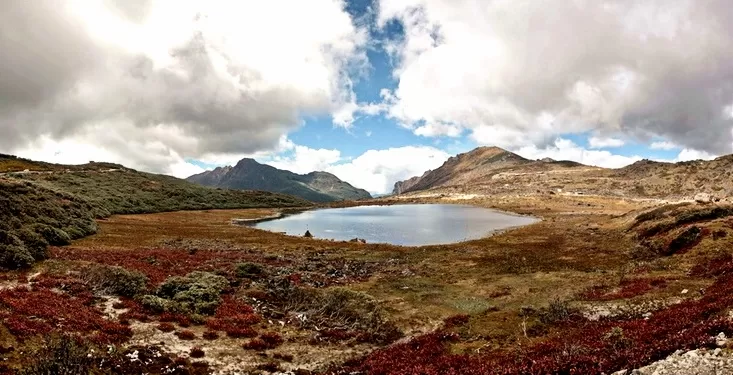

That Goa is a persisting hanger-on to most itineraries around India is more an indication of a lack of alternatives than an actual advertisement of its pull as a beach destination. Overcrowded, filthy and often prohibitively priced, about the only saving grace of Goa is its vibe – an easy-going, bohemian breeziness that pulsates through its every vein and infects everyone that comes in touch with it. Combine with that the fact that it fosters what is arguably the best party-scene in India, and you have yourself the reason why it is so difficult to find an alternative to.
However, if it is beaches you are looking for – actual beaches with beach shacks not encroaching on their entire space, with space to laze and get a tan while reading a book, with stretches of unperturbed sand and sea in the distance – you needn’t go too far south. As soon as you cross the border into the state of Karnataka lie the several beaches of Gokarna, offering you the undiluted beach experience in an accessible neighborhood setting that makes it all the more intimate and cozy. Indulge every whim to not move a muscle and give in to the temptation to miss your train back. This is the sinful kind of lazy. But if you do manage to move yourself and get into a boat, you might be

9. Seeking some quiet immersion in history?
The Hoysala Temples of Hassan in Karnataka
Instead of Hampi in Karnataka

If suggesting an alternative to the Taj Mahal felt blasphemous, even talking about parallels to Hampi feels like a betrayal to our own love for the rumbling, dilapidated former capital of King Krishnadevaraya and the many stories it whispers through its wise old sandstone. It is a sweeping landscape of poetic history lessons lying on the banks of the mighty Tungabhadra, a sunset over which is a humbling experience that leaves you quite speechless. However, Hampi is no longer a well-kept secret, and each of these views will need to be shared with several other people, making the experience of soaking in the history a little elusive.
A little more than three hundred kilometers to the south of Hampi, in the quaint district of Hassan, lie the remains of the Hoysala kings, another great Kannadiga empire. While the remains are mostly in the form of temples scattered across the district, hardly recreating the feel of actually walking through the empire, the temples themselves are in a beautifully preserved condition, allowing you to get lost in the intricacy of every exquisite soapstone facade for hours on end. While Belur and Halebidu were the two capitals of the empire and house the most popular of these temples, the other ones – all within shooting distance – are equally fascinating, and offer fewer crowds.

10. Looking for fresher white waters to raft over?
Tirthan Valley in Himachal Pradesh
Instead of Rishikesh in Uttarakhand

White-water rafting in India has nearly become synonymous with the town of Rishikesh, located at the foothills of the Himalayas and considered a convenient base for longer forays into the mountains. Nearly every turn of the Ganges for several kilometers up the river from Rishikesh is dotted with tents of aspiring rafters and groups to lead them. However, the town itself has been sapped of its interest value by an over-crowding of hotels and tour companies, all yelling at you about offering the best prices. As far as entries go, it is not the most appetizing way to start your Himalayan meal.
Tucked into the Great Himalayan National Park, located in the district of Kullu, is the Tirthan Valley, a worthy alternative destination for river rafting enthusiasts but a fantastic travel destination even otherwise. The Tirthan river that gives the valley its name runs along a pristine landscape and offers some thrilling rapids. If you have had a fill of navigating frothy, rocky waters, you are in luck — the Great Himalayan National Park happens to be one of the most picturesque trekking destinations in all of the country. Take your pick. Or, like us, sit back next to your tent and marvel at the overwhelming beauty that surrounds you.

















